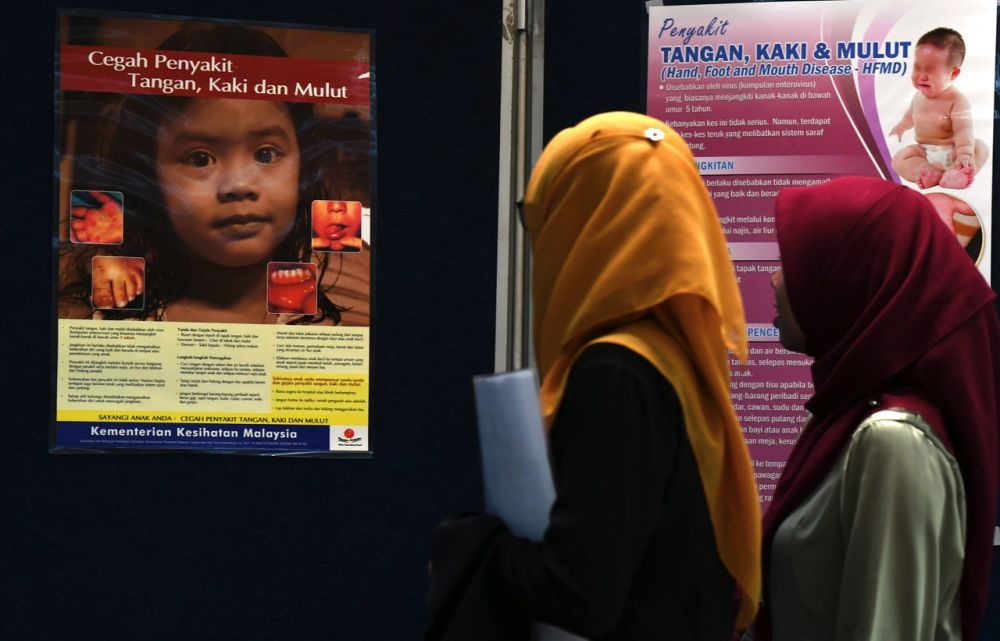GEORGE TOWN, March 28 — Penang saw over a four-fold increase in Hand, Foot, and Mouth Disease (HFMD) cases between January 1 and March 22 this year compared to the same period last year.
State committee chairman for youth, sports, and health Daniel Gooi Zi Sen said a total 3,446 cases were reported in that period this year, compared to only 677 cases for the same period last year — a rise of 409 per cent.
“This is an increase of 2,769 cases this year,” he said in a press conference at his office in Komtar here.
He said a total of 112 clusters were detected in the same period where 81 clusters (72.3 per cent) involved pre-schools, nurseries and kindergartens while 30 (26.8 per cent) involved schools and one cluster was reported at day care centres.
“Central Seberang Perai recorded the highest number of cases (1,082) to be followed by South Seberang Perai (700), northeast district on the island (628), southwest district (620) and North Seberang Perai (416),” he said.
Even in the epidemiological week 12 of 2025, between March 16 and 22, a total of 422 new cases were recorded, he said.
He added that a total of 22 new clusters were reported in the same week.
“Currently, 26 clusters remain active, but all recorded cases only exhibit mild symptoms and received outpatient treatment without any serious complications or the need for intensive care,” he said.
He said the virus responsible for the spread of HFMD is Coxsackievirus A16 (CA16), which spreads through contact with saliva, blister fluid, and the faeces of infected individuals.
“However, most infections only present mild symptoms such as fever, followed by blister-like rashes on the hands, feet, mouth, and tongue,” he said.
He said nearly all patients recovered without requiring specialised treatment within seven to ten days.
In a related development, Daniel mentioned that one case of Enterovirus 71 (EV71) was also detected in Penang this year, but it did not involve severe symptoms.
“EV71 infections can cause serious complications such as encephalitis (brain infection), pneumonitis (lung infection), and myocarditis (heart muscle infection),” he said.
He said despite the increase in HFMD cases, there were no cases requiring Intensive Care Unit (ICU) treatment or resulting in fatalities.
He urged operators of childcare centres and early childhood education institutions, such as nurseries, kindergartens, and preschools, to implement preventive measures including entry screenings and disinfecting contaminated surfaces.
“They should also report HFMD clusters to the nearest district health office,” he said.







